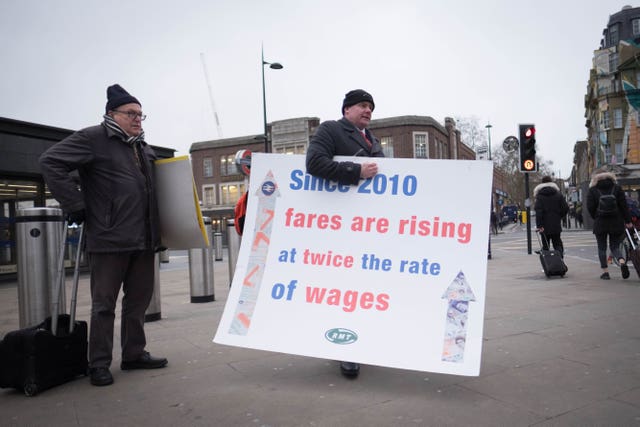
Britain’s rail fares increased by an average of 3.1% on Wednesday.
Here, the Press Association looks at some of the key questions around the complicated and controversial annual rise:
– Why do fares go up?
Successive governments have chosen to reduce the relative funding of the railways by taxpayers and increase the contribution of passengers.
– Are all fares treated the same?
The increase in about 45% of fares is regulated by the UK, Scottish and Welsh governments. Other fares are set by train operators.
– Which fares are regulated?
Regulated fares include season tickets on most commuter routes, some off-peak return tickets on long-distance journeys and flexible tickets for use in major cities.
– How much will regulated fares increase by?
Price rises for these tickets are capped at July’s RPI figure, which was 3.2%.
There is an exception in Scotland as its government caps regulated off-peak fare increases at RPI minus one percentage point.

– What do passenger groups say?
They claim people are being priced off the railways because wages are not increasing at the same rate as fares.
– What impact have fare rises had on demand?
Passenger numbers have more than doubled since the network was privatised in the mid-1990s.
– Where does the money go?
Industry body the Rail Delivery Group says profit margins for rail firms are about 2%, with the rest going on running the railway.
– What improvements are being made?
The Department for Transport says it is investing in the biggest modernisation of the network since Victorian times, with major projects to provide faster and better trains with more seats.


Comments: Our rules
We want our comments to be a lively and valuable part of our community - a place where readers can debate and engage with the most important local issues. The ability to comment on our stories is a privilege, not a right, however, and that privilege may be withdrawn if it is abused or misused.
Please report any comments that break our rules.
Read the rules here